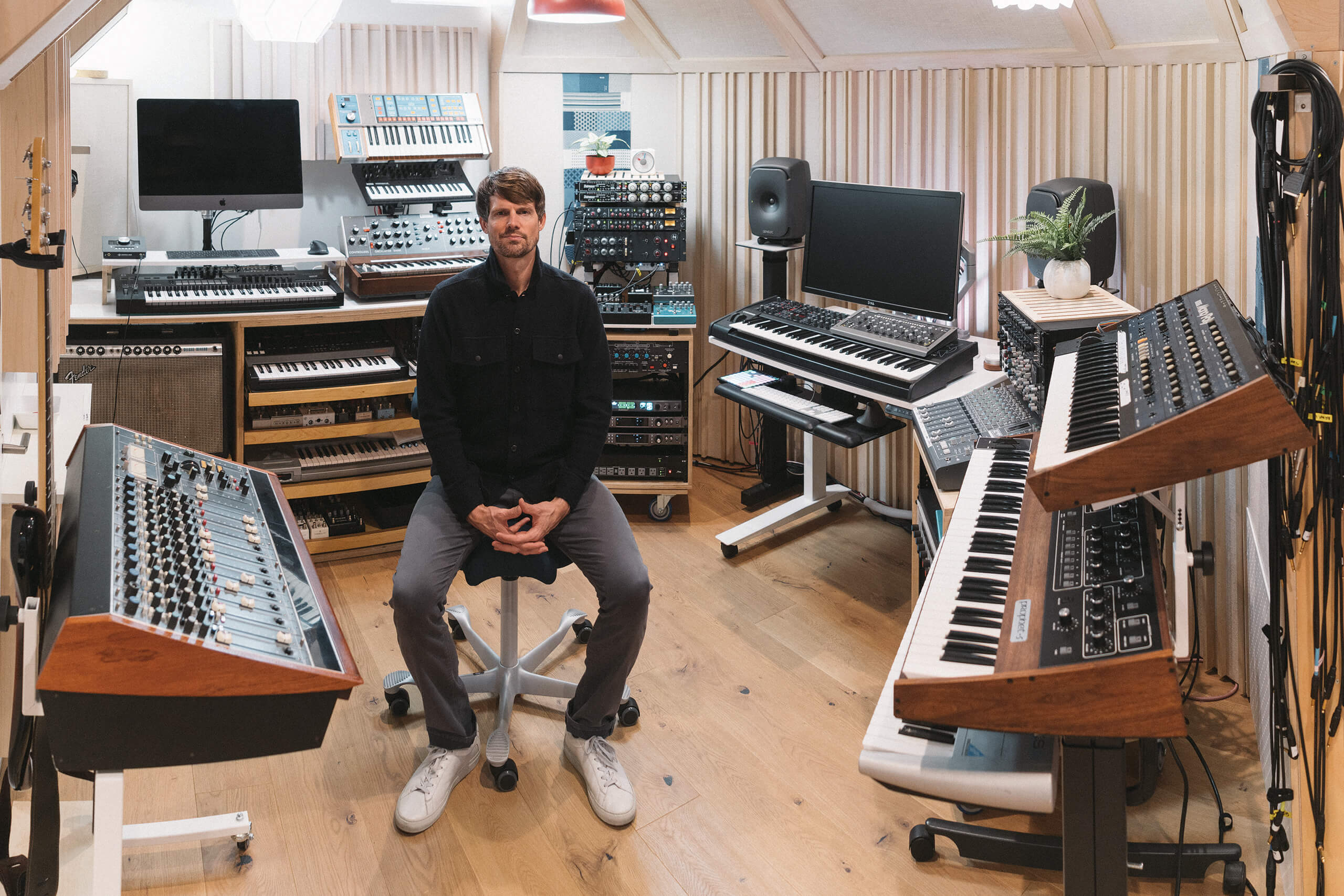
Tycho: “A big part of my sound is harnessing artefacts that aren’t supposed to be there”
Scott Hansen tells us how he spins immersive soundscapes with preamps, plug-ins and pedals, and why after 20 years, his sound is still evolving.
Scott Hansen is busy. “I don’t know if I’m slowing down or what,” says the Sacramento-born multi-instrumentalist otherwise known as Tycho, “but these days it just feels like there’s never enough time to get anything done.”
One glance at his diary and you’ll see exactly why Scott is struggling for time. He’s been juggling professions since the early-2000s and, in the past few years alone, has released two LPs and toured Europe and Australia, all while continuing to design his own artwork and live visuals. You might expect him to be enjoying a well-earned break then. Not quite. With multiple projects on the go, including remixing other artists’ music and writing a score for a videogame, the Californian is as industrious as ever. “I’ve been doing this for 22 years now,” he says. “But I feel like I’m just getting started.”
Dive in
In the seven years between the release of his 2004 debut Sunrise Projector – re-released two years later as the better-known Past Is Prologue – and his 2011 sophomore album Dive, Scott earned a living through his ISO50 visual arts project, which encompasses photography and graphic design, and sees him create much of Tycho’s album artwork. But shortly before the release of his second record, Scott faced a choice. “I thought, ‘I’ve got all these songs and if I don’t do this now, maybe I’ll never have the opportunity to do this for a living.’ A lot of things came together that year.”
His experience in marketing and branding has long helped Scott create cohesive suites, and keeps him cannily equipped to use platforms to his advantage. “There was never a moment where this genius marketing campaign happened or whatever,” he says. “It was more about just keeping on it, using mp3.com in 2002, using MySpace when that was a thing, using Facebook, then using SoundCloud and Instagram – whatever platform is going to allow you to reach people and get your music in front of them. The label has helped. Aligning yourself with people who share your passion and vision is huge.”
“Maybe it’s just an irrational fear but I always think that if I’m not releasing music, I’m not in people’s consciousness.”
The man behind the Tycho brand recognises the challenges inherent in keeping pace with the music industry. “You gotta keep your foot on the gas otherwise you’re irrelevant,” he says. “Maybe it’s just an irrational fear but I always think that if I’m not releasing music, I’m not in people’s consciousness.” Fortunately for Tycho, his full-length albums, including seminal ambient soundscapes Dive and Awake, and their Grammy-nominated 2016 follow-up Epoch, have been so strong as to hold their grip on fans for years after their release. Scott’s records have been streamed in their entirety tens of millions of times on YouTube, while his top-five tracks on Spotify have amassed more than 125 million streams alone.
His latest records are Weather and Simulcast, released in 2019 and 2020, respectively. The former is a vocal-led project with conventional song structures that began as instrumentals until Tycho stripped them back to make room for vocalist Saint Sinner. The latter builds on Weather’s shorter tracks and takes listeners on a dreamlike instrumental journey akin to Tycho’s early oeuvre. It remains to be seen whether these records will reap the kind of long-term rewards as his best-loved works, which have stood the test of time. Peer inside his San Francisco studio and you’ll see that his gear is equipped to do the same.
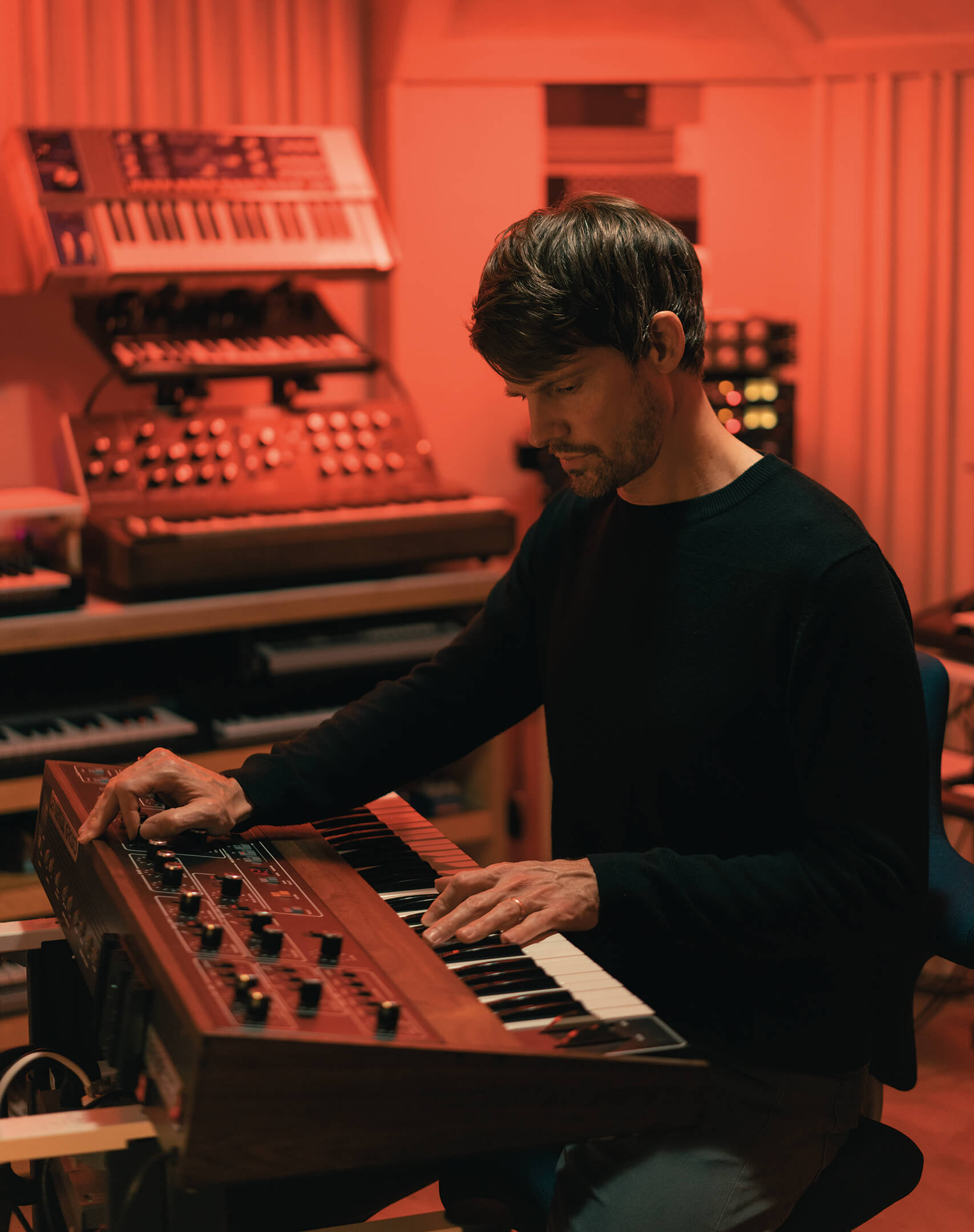
Warming up
Tycho’s music has been peppered with the sounds of vintage Neve gear since the very beginning. In his more humble pre-Dive years, however, those sounds came not from Neve hardware but from Chameleon Labs clones. But mounted on his rack now is a pair of Neve 1076s, which are essentially 1073 preamps that sport switches instead of knobs, and which Scott favours for the warmth of their distortion. “The warmth and the way the EQs work means you can really blast them without the sound breaking down or becoming harsh,” he says. “That’s been a big part of my sound the whole time, pushing the high end. You bring out noise and artefacts that aren’t supposed to be part of the sound and use heavy compression to bring them to the forefront.” For a shining example of the rich high end that Scott’s able to coax out as part of this process, listen to Simulcast’s Outer Sunset, which features contrasting crushed drums, simmering guitar tones and deep pads but maintains a pleasing dynamic range throughout.
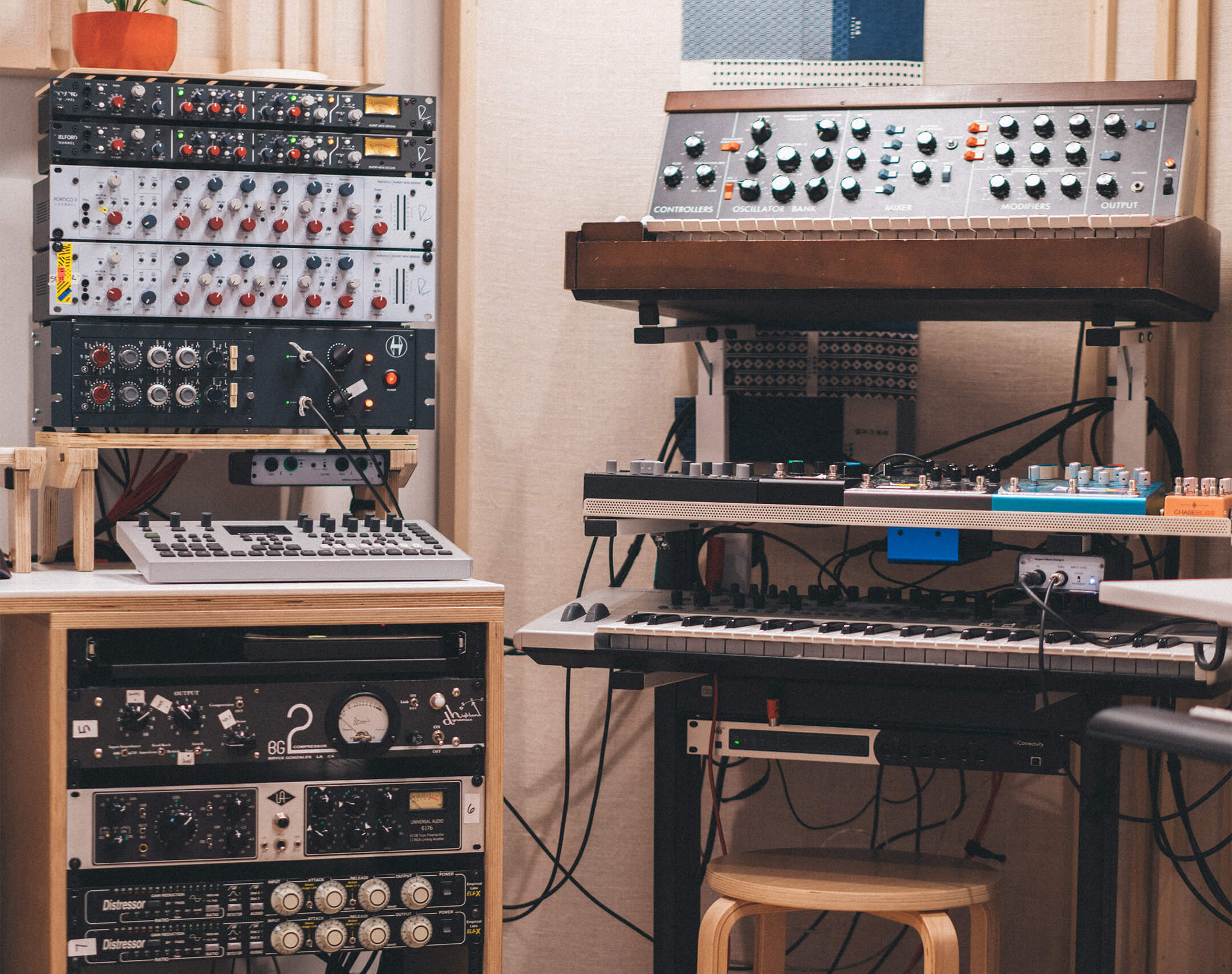
These ocean-deep pads come courtesy of Ursa Major’s unique Space Station SST-282 digital reverb from 1981, fed through a host of other effects. “It’s six channels,” says Scott. “I take a reverb and run it through a distortion and a filter, put another reverb on it, then put maybe another reverb on it before the delay. It makes for really interesting pads.”
Although Tycho’s chords sound painstakingly designed and played, they are in fact created via these combined effects, which form layers of elongated notes that amalgamate into harmonically dense sounds. “Creating chords using reverb is kind of my signature,” says Scott. “I’m not playing these big complex parts. It’s just the reverbs and delays overlapping with other notes to create these engaging sounds.”
“When I got my first analogue synth, I was like, ‘Where’s the reverb?!’ I couldn’t believe it didn’t have effects.”
The driving forces behind Tycho’s music, the two synths he couldn’t do without, have long been his vintage Moog Minimoog Model D and Access Virus KC. But despite the Minimoog being a monophonic monster, many of the wall-of-sound tones heard in his music are borne from layers of its singular notes. But inspiration doesn’t come solely through his remarkable vintage synths, nor through his slippery musical ideas. Instead, Scott’s approach is an experimental one that encompasses his instruments, pedals and effects. “I play the gear like an instrument,” he says, “playing into it and letting what it’s doing inform the performances. I don’t get ideas and I’m not musically trained. Most of the interesting stuff that happens is a direct result of the production process.”
In the mid-2000s, about the time Tycho released his debut record, the synth market was rife with analogue modelling instruments, such as the Access Virus, the Roland JP-8000, and Novation’s early releases. Most were equipped with onboard reverb and delay effects, which gave Scott something of a false impression. “When I got my first analogue synth, I was like, ‘Where’s the reverb?!’ I couldn’t believe it didn’t have effects.”
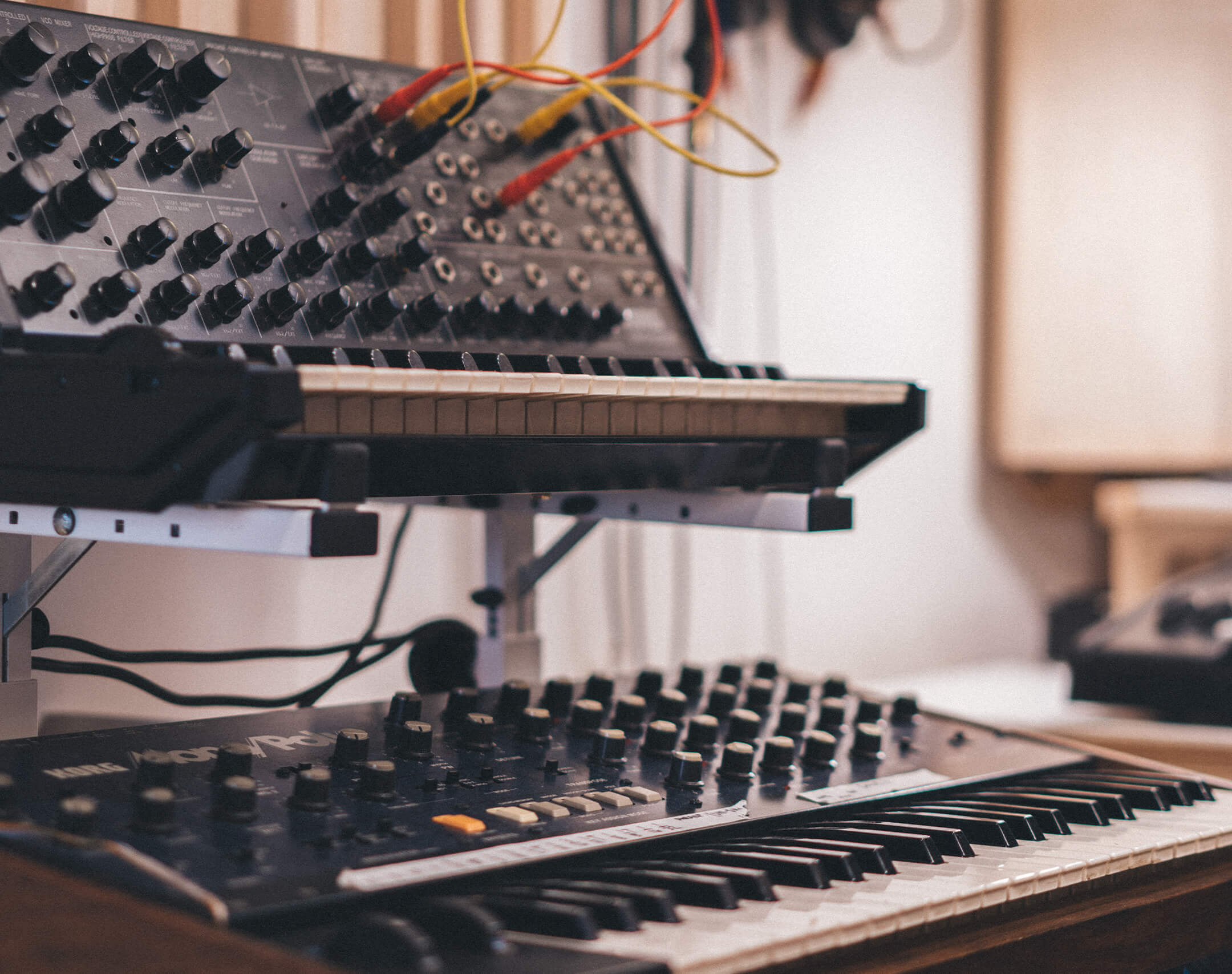
Pedal power
Housed beneath his heavyweight synths and racks are a broad range of guitar pedals, of which Chase Bliss products form some of his favourites. “I just got the Blooper,” he says. “Have you seen this thing? It’s so cool. The Tonal Recall is cool too – it’s my favourite analogue delay.” UK pedal peddler Origin Effects is another go-to for Tycho. “This thing’s crazy,” says Scott, laughing as he picks up the RevivalDrive overdrive pedal. “You can put it in front of any amp. It’s real analogue but it can simulate ghosting and sagging. You can make a Fender sound like a Marshall or vice versa”. The coveted Strymon BigSky can also be found in Scott’s pedalboard, with its vast reverb heard among many of his tracks.
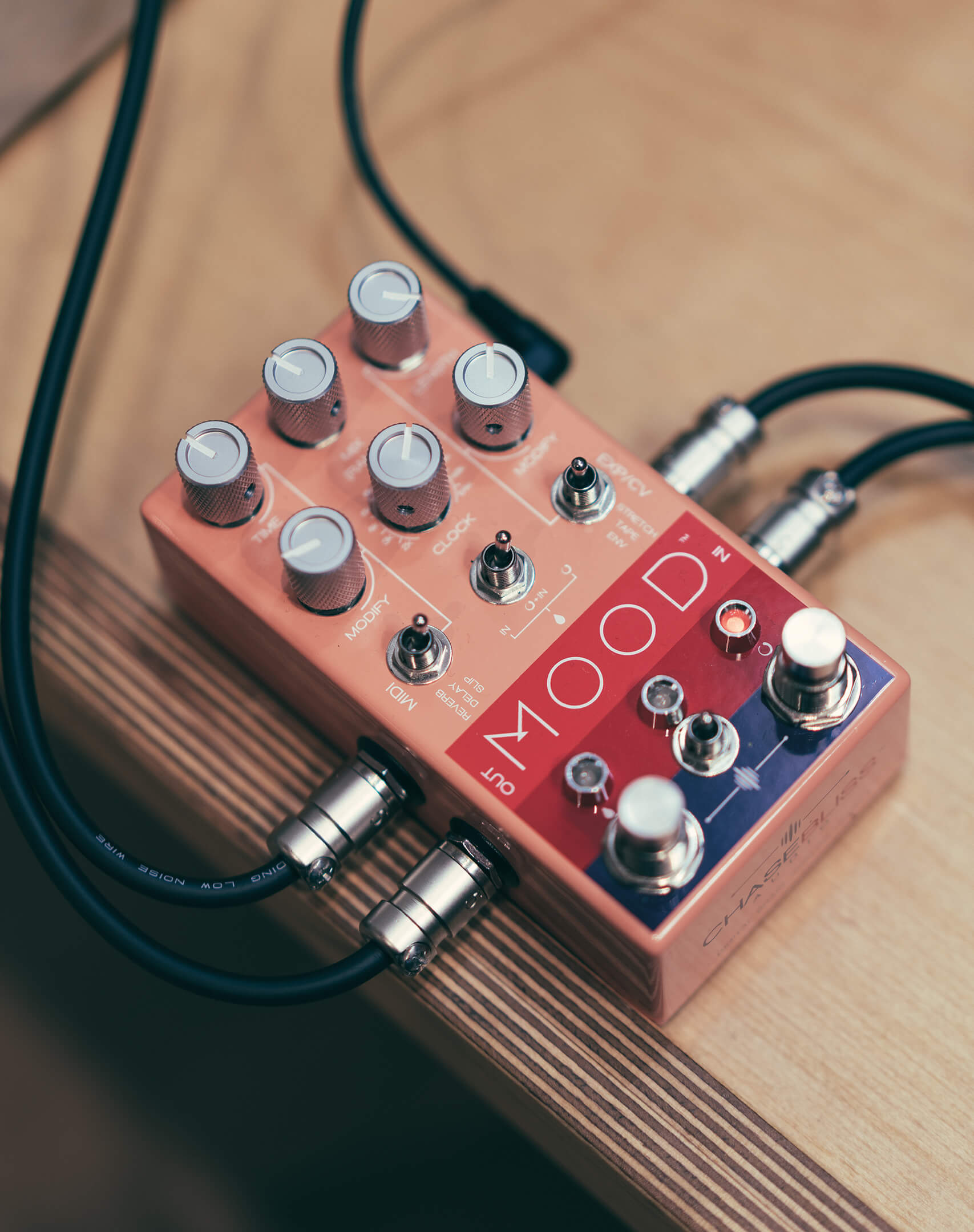
Print isn’t dead
Scott’s production processes and experimentation don’t stop at hardware. Universal Audio’s UAD plug-ins have become a significant part of his process. Though he has the UA X8P audio interface now, Scott still uses the Lynx Aurora for his conversions, which is what gives his sound its “soft, creamy texture”. Meanwhile, the preamp technology in the UA gear provides a tape-like colouring. “The Apollo is the only interface I ever feel comfortable plugging directly into and recording through,” says Scott. “It sounds incredible.”
Continuing his instrument-like approach to audio equipment, Scott uses his UAD plug-ins in a destructive manner by adding inserts such as compressors and committing to the take. “I just treat it like hardware,” he says. “I say, ‘Hey, if this was a compressor, a 1176 or a Distressor, I would be printing this, so let’s just print it.’ It’s interesting because I have two Distressors and a 1176 that I’ve taken out of my workflow to simplify my thought process. I use the software versions and feel like I get better sounds because I can be more granular and more experimental with them.”
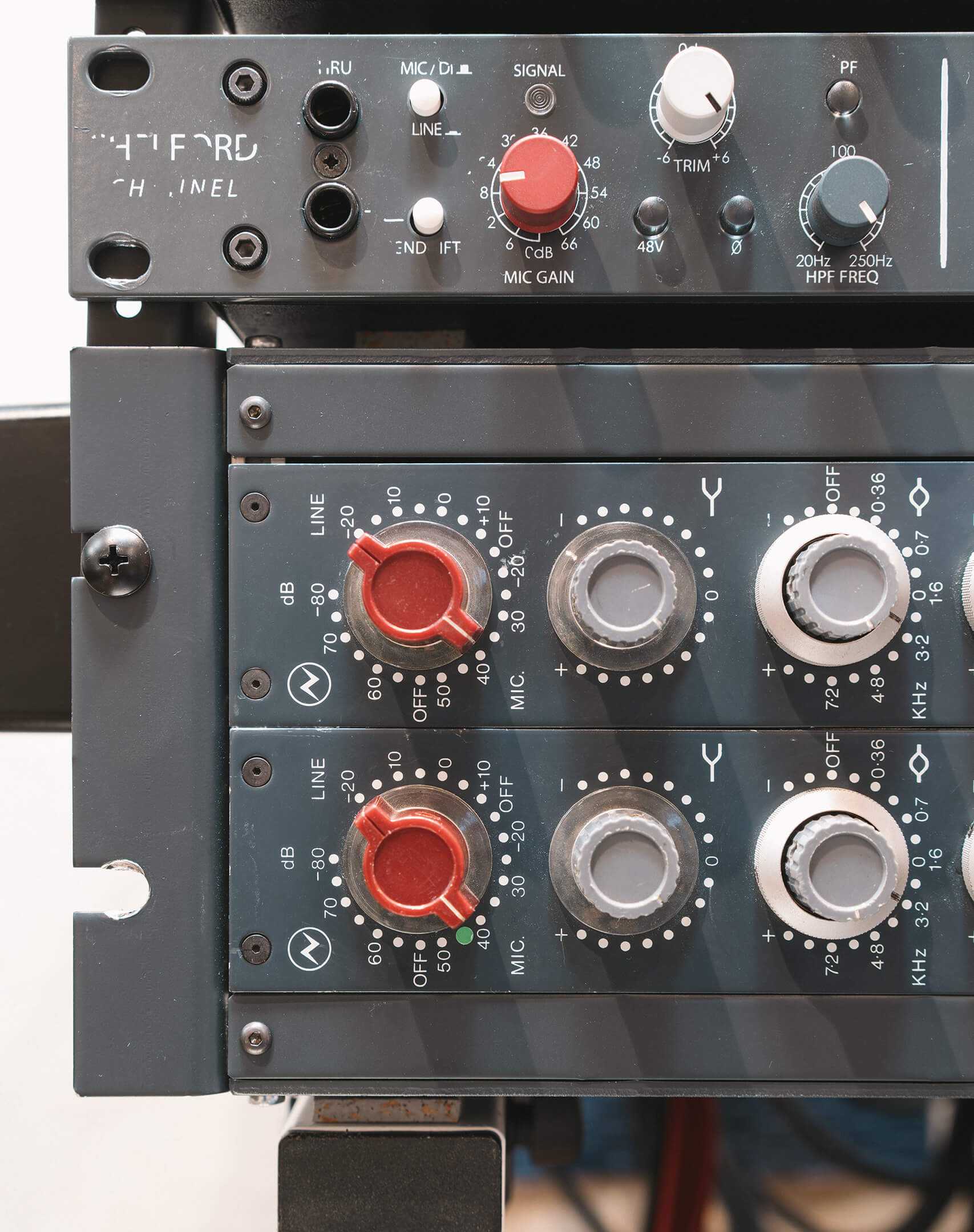
Don’t fear the Reaper
UA’s new recording system Luna has been getting quite the trial run in Tycho’s studio too, with Scott happily acting as a beta tester for the platform. Though he works predominantly in Cockos’ Reaper, the new UA alternative has become a sketchpad for the experimental producer. Using its effects and workflow, he’s able to create complex signal chains and record them directly into his preferred DAW. “It’s like a tape machine that should sit in between your DAW and outboard,” he says. “At least, that’s what it is for me right now.” Playing the double-DAW setup like a single cohesive instrument is clearly important to achieving Scott’s desired sound. But he wouldn’t be able to do so unless his tools were adaptable, and this is why he’s so fond of Reaper.
“Reaper’s efficiency is number-one,” says Scott. “It’s a very visual programme, very extensible, very flexible. You can design it to work the way you want, all the way from creating macros and shortcuts to scripting.” It’s these kinds of features that make the Cockos DAW so beloved by producers. The ability to customise its workflow can save you hours in the studio.
Until recently, it was Reaper that Scott used to pull the strings during his live shows too. The 43-year-old might have had multiple projects open for each track, and with Reaper he was able to switch between them with ease, with all his plug-ins neatly wrapped up together. His fondness for the lesser-used DAW, however, led to a few issues. The problem he and the band faced while on tour was that relatively few FOH engineers were proficient in it. “Reaper is the most efficient way to do the live show but it’s hard to find people to run it and maintain it on tour,” says Scott. “Ableton Live is kind of the universal language everyone speaks so I switched everything to that.” Today, he uses Ableton Live, essentially as a software-based pedalboard with effects chains, clip-launching and automation, to successfully perform entire shows.
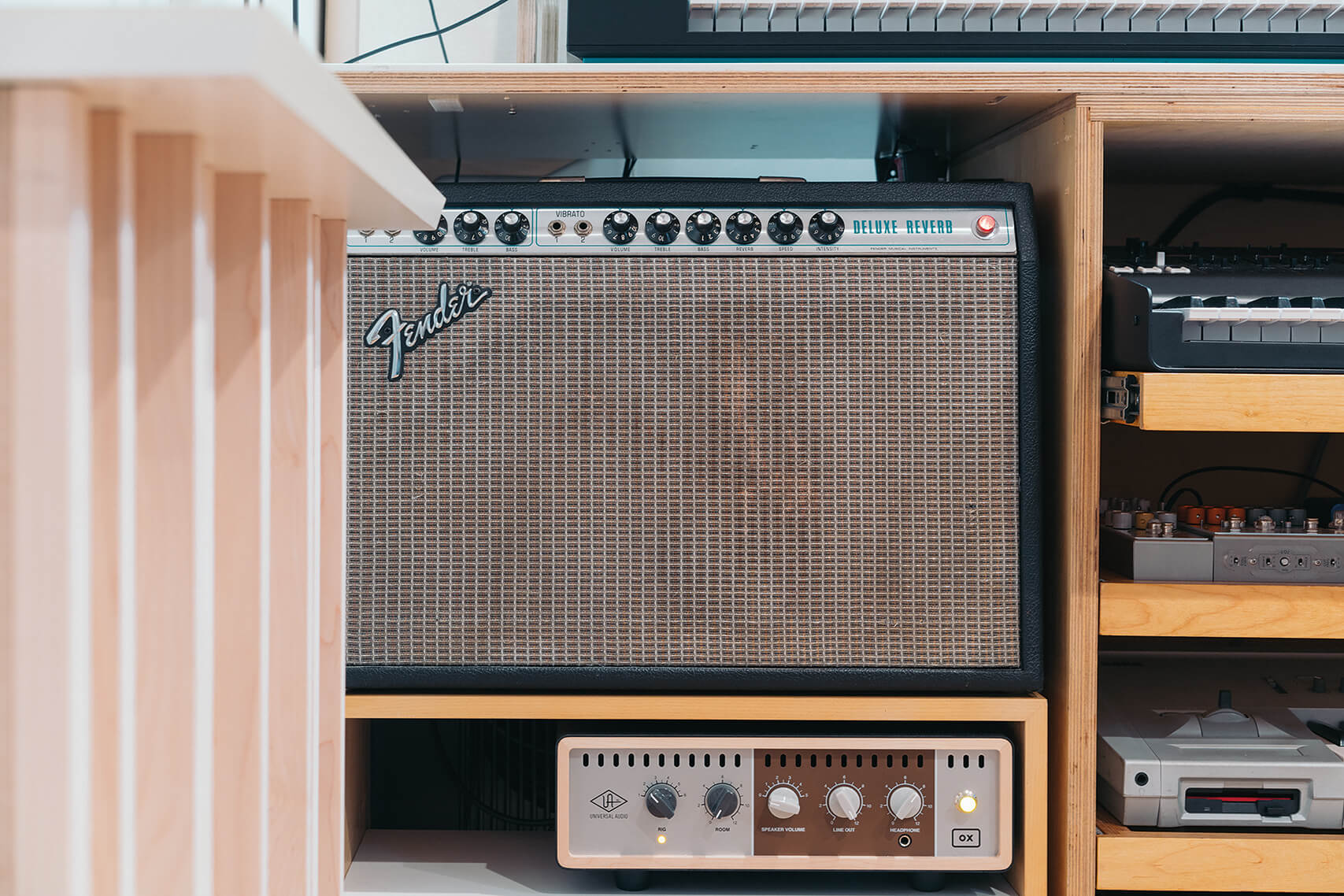
Choose your weapon
As a predominantly ambient and electronic artist, Tycho doesn’t cart around an enormous live rig made up of cherry-picked studio treasures – but you might be surprised by the gear Scott does take on the road. Before the 2016 reissue of the Minimoog, his live rig featured emulators such as Native Instruments’ Monark, which meant he could leave his cherished and delicate vintage Model D safely tucked away at home. Now though, along with his Virus and his Korg Minilogue, the Minimoog reissue comes along for the ride too. “It’s been great having a real Minimoog,” says Scott, “a real instrument that’s playable and tweakable in real time. It’s been huge.”
Some of Scott’s gear is simply too mighty to be removed from the studio and carried on tour. If a dear piece of gear can’t come along, it’s usually sampled or replaced by a reliable emulation. “I bring the Virus and the Minilogue,” says Scott, “but anything there isn’t a modern equivalent of, like the Mono/Poly, I just sample.”
His condensed rig also limits the number of pedals Scott can take on tour, although Tycho guitarist Zac Brown recently built a new pedalboard, especially for the Simulcast tour. “I bring a pretty limited guitar-pedal selection for myself because I use mostly plug-ins,” says Scott. “Almost all my effects that you hear on stage come via an Apollo.”
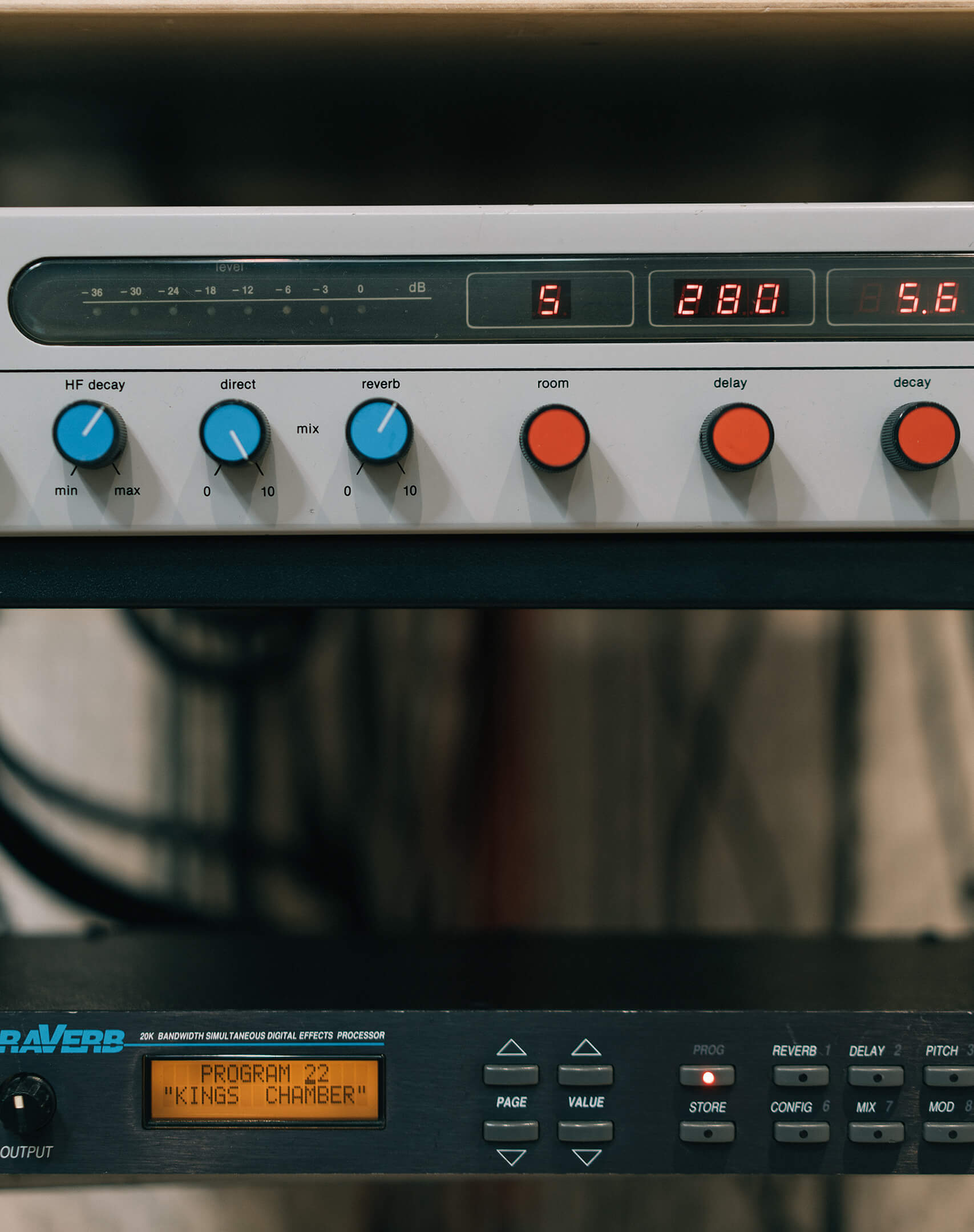
Weather forecast
Although Tycho is Scott’s brainchild, the live shows rely on an all-important cast of characters, which includes Zac, bassist and synth artist Billy Kim, drummer Rory O’Connor, and vocalist Saint Sinner. Zac and Rory have been a key part of the act since 2011’s groundbreaking Dive, and Zac lends a vital hand in arranging the many ideas compiled by Scott, which he lightheartedly attributes to his short attention span. “The difference between Dive and Awake,” says Scott, “had everything to do with Zac coming in and saying, ‘Listen, man, there’s 20 things going on here – let’s focus on two really good things.’ I learnt a lot through that.”
“Dive is one of those records people accept just as a singular work”
You can hear how Scott’s self-editing skills have developed across subsequent records, especially on 2019’s Weather, on which each track clocks in at under the five-minute mark, making it ideal for vocals. Its sister album Simulcast, on the other hand, expands on Weather’s tracks with evolving synth lines, breakdowns and drawn-out pads – which allowed Scott to weave them together in a longer form reminiscent of his best-known works. “It’s like eating a nice chicken dinner instead of eating candy,” he says. “It’s like a nice multi-course dinner instead of a bag of Skittles. They’re two different things and sometimes I appreciate one thing, sometimes the other. It’s when I take multiple ideas and weave them together in a cohesive way that I feel like I’m achieving my vision.”
In the loop
When it comes to Rory’s drums, Tycho returns to his experimental tendencies. “I came up using loops and breaks because I was making drum ’n’ bass,” says Scott. “I was always trying to do d’n’b stuff or DJ Shadow-style stuff. I realised later that a big part of my process was working with loops and chopping them up, and that these linear performance-oriented drum parts were messing up some elements of how I wrote music. With Epoch, I just used loops. I started with loops, made the songs and then Rory came in at the end and played the top layer. For the latest albums, I recorded Rory at the beginning with the intent of creating a loop library of breaks that he’d actually played – that’s what you’re hearing on Weather and Simulcast”.
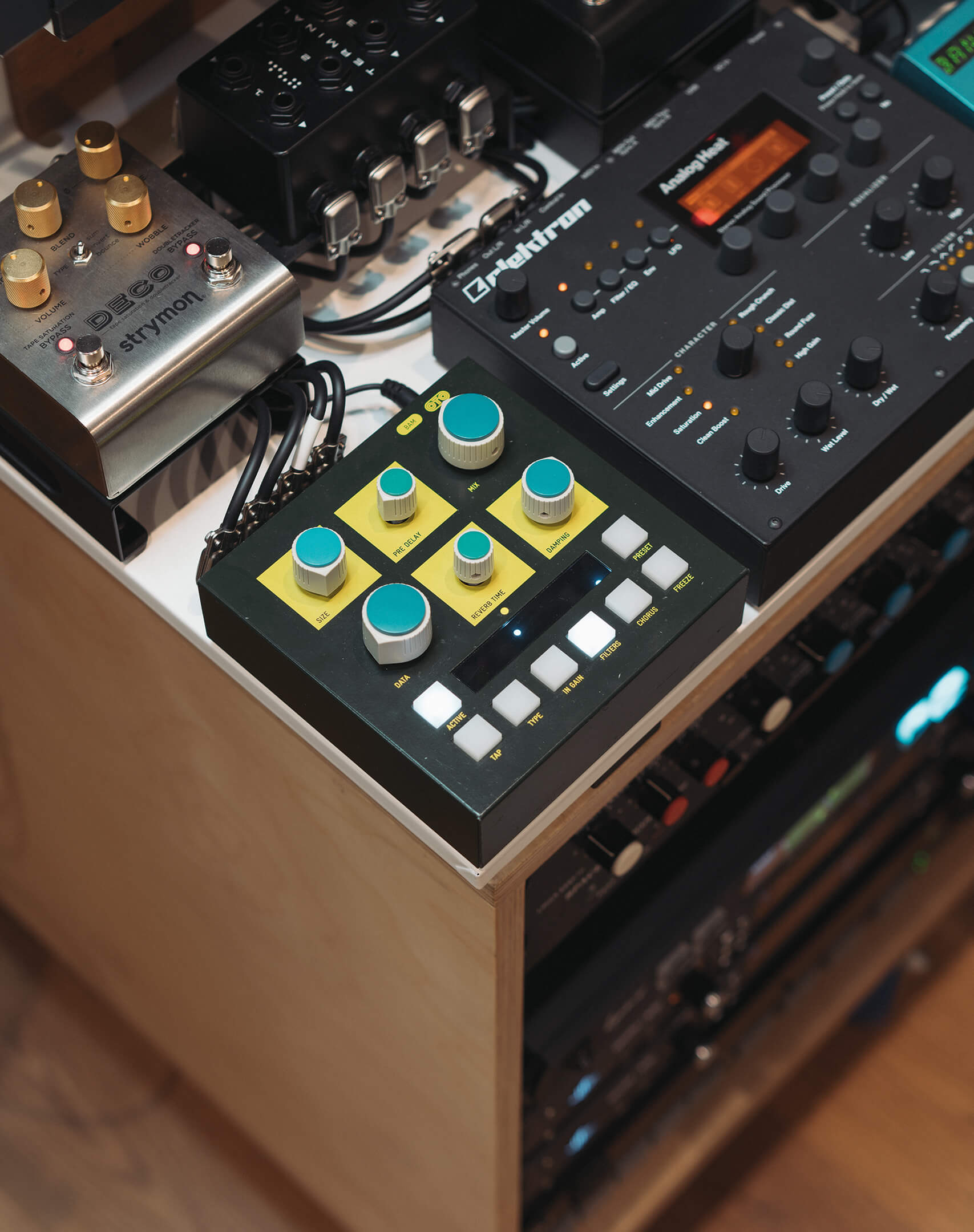
Out for the count
Despite Scott being the primary composer, producer and performer behind the Tycho name, the process is still one of collaboration: his mastering engineer Count has been working with him since Dive; Zac took a co-production role on Epoch; and the vocal-oriented Weather was created entirely by Scott and singer Saint Sinner, using the Simulcast tracks as its foundation.
Working with a vocalist on Weather wasn’t totally new to Tycho. His debut Past Is Prologue was originally accompanied by vocal lines too. Still, Scott admits that vocal recording isn’t his strong point. “I always thought recording vocals was the holy grail of engineering,” he says. “I didn’t think I could do that – I thought our recordings in the studio [for Weather] would end up being demos but they ended up on the record. That takes you back to an earlier time in your career when you didn’t know what you were doing but you didn’t know that you didn’t know what you were doing, so you just do it.”
“I love the album format. I want that to be part of the story”
It’s been speculated by music-lovers and industry observers that, with the rise of streaming platforms, the concept of the album is dissipating. But with each of Tycho’s albums replete with tracks that seamlessly flow into the next, are computer-curated playlists clouding the efforts of ambient, electronic and post-rock producers such as Scott? “I’ve never been a purist,” he says. “But I love the album format and want to identify as somebody who puts out albums. I want that to be part of the story and part of the experience. But, my whole life, I’ve always cherry-picked songs off of albums. That’s the nature of being a DJ too – finding the moment and finding the thing you appreciate about a certain artist.”
It’s perhaps unsurprising, then, that in this modern world of algorithmic suggestion-led playlists, along with the likes of Com Truise and Bonobo, Tycho’s music has become synonymous with YouTube’s burgeoning chillwave scene – a full-album upload of Dive has accumulated more than 33 million views. “Dive in particular is a journey though,” says Scott. “It’s one of those records that people have accepted as a singular work, as opposed to a collection of songs, which is really cool. It also benefited from six years of rethinking and me being able to go back and consider how it all fits together. It was definitely one of those records where I had the luxury of time.”
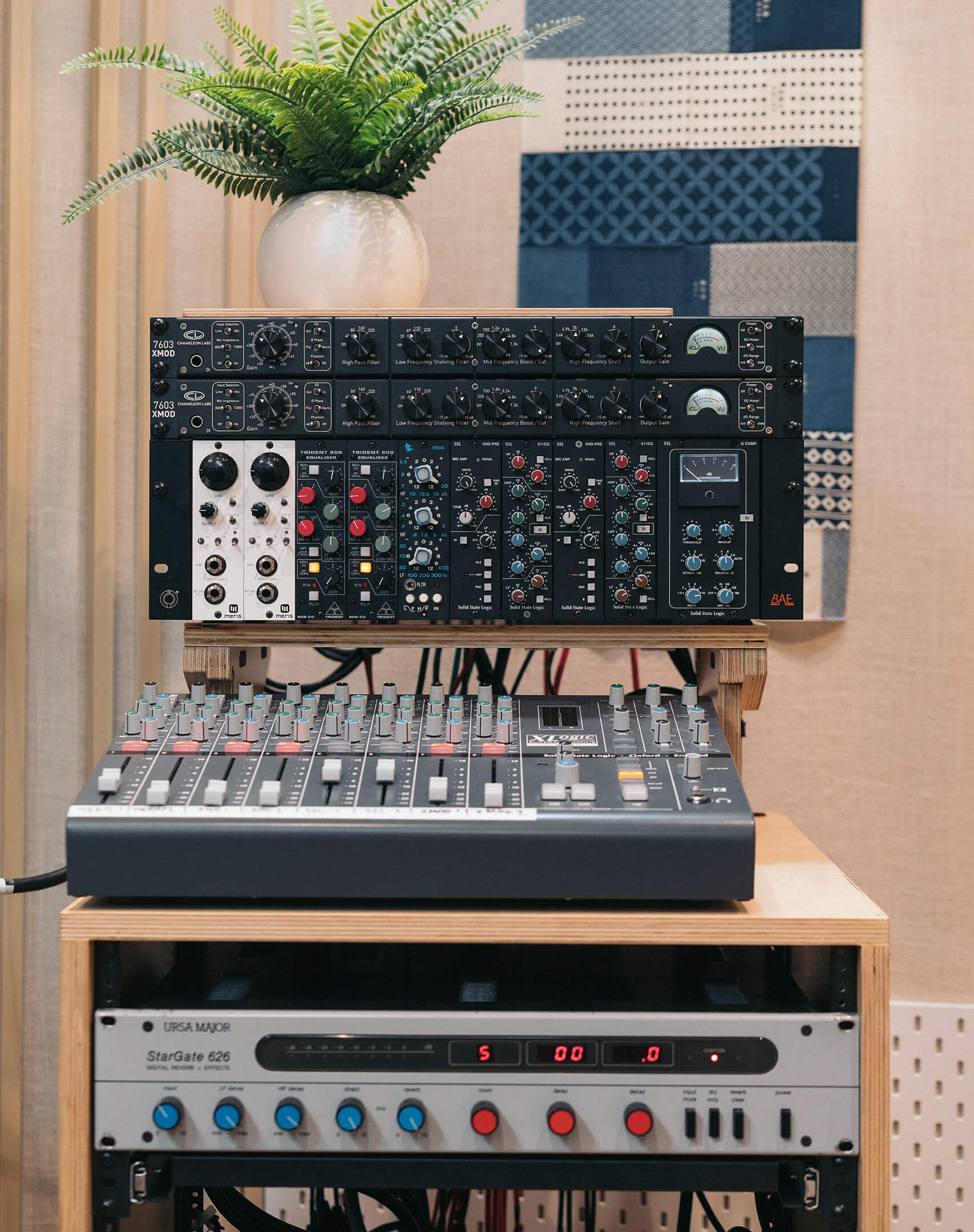
Crisis Mode
In the midst of the COVID-19 crisis, the music and live-performance industries are facing herculean challenges right now, with gigs, festivals and outdoor events of all stripes being axed and indefinitely postponed. While we remain optimistic about artists’ chances and those of the sector as a whole, we won’t beat these trials unless we work together as a community. In the meantime, the potential threats are gargantuan.
“Obviously, music is small in comparison to what’s happening to a lot of people,” says Scott. “But even many high-profile artists are in a tight spot right now. Some of them just released albums and were out there touring them – which costs a lot of money, depending on who you are and what you’re trying to do – when this all happened. There are all these costs associated with starting a tour, which you hope to recoup as a result of it, and when that gets shut down you’re screwed. As I was saying, if you don’t stay in people’s consciousness with a tour, they’re like, ‘What have you done for me lately? Your album was out six months ago? What are you talking about?’ This situation has the potential to destroy careers.”
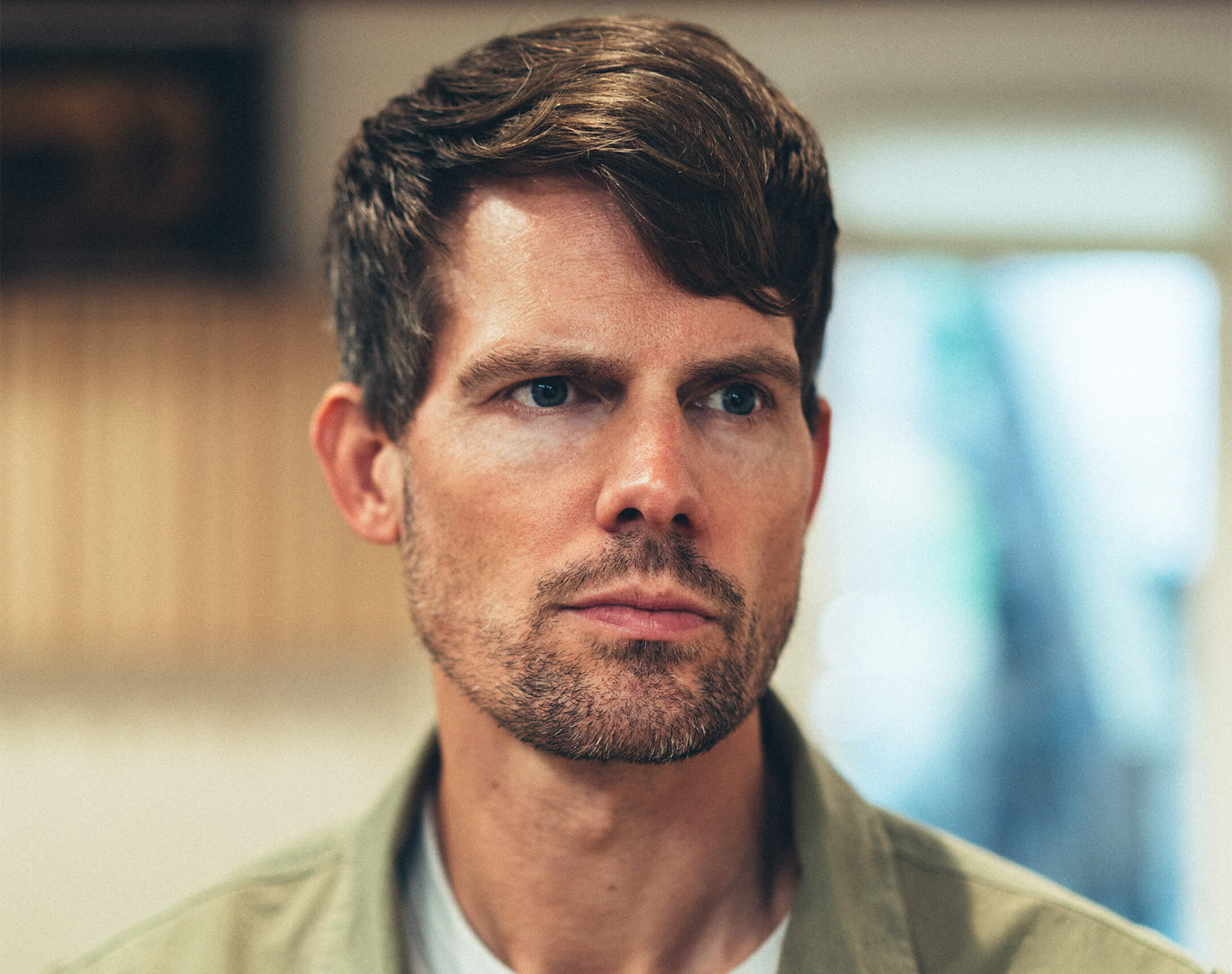
Tycho has enjoyed a strong decade since Dive and shows no signs of slowing down, especially evident when you hear Simulcast and consider his development processes. After all, he feels like he’s just getting started. But what advice does he have for those who are indeed just launching their careers and want to break through in 2020 and beyond? “Spend every waking minute of, you know, 20 years focused entirely on progressing,” he says, with a laugh. “You have to love it. You have to be obsessed. I don’t believe you can work for more than a year on a project that you’re not passionate about and expect it to be amazing.”
You can purchase and listen to Tycho’s new album, Simulcast, now. Find out more at tychomusic.com
This interview is from MusicTech Issue 207, which you can access here. Read more producer interviews here.